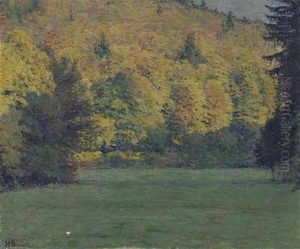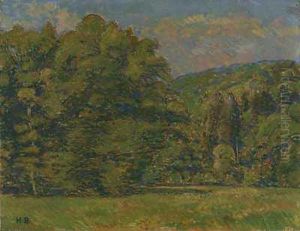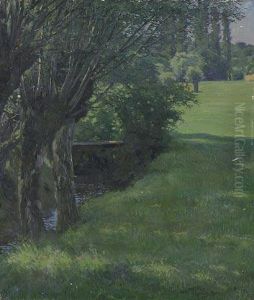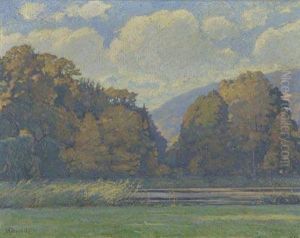Rudolf Hans Burnitz Paintings
Rudolf Hans Burnitz was a German architect and watercolorist, born in 1842 in Frankfurt am Main, Germany. His contributions to the field of architecture and his distinctive style in watercolor painting have left a lasting impression on the German art scene of the late 19th and early 20th centuries. Burnitz's career was marked by a fascination with the architectural heritage of his homeland as well as the broader European context, leading him to become one of the prominent figures in the revival of historical architectural styles, particularly the Neo-Renaissance.
After completing his studies in architecture, Burnitz embarked on extensive travels across Europe, which greatly influenced his artistic and architectural vision. These travels allowed him to study various architectural styles firsthand, from the Gothic cathedrals of France to the Renaissance buildings of Italy. His experiences were deeply reflected in his works, both as an architect and as an artist, where he demonstrated a keen ability to capture the essence of architectural forms and details with remarkable accuracy and aesthetic sensitivity.
Throughout his career, Burnitz worked on several significant projects, including restoration works and the design of new buildings. His approach often involved blending historical styles with contemporary needs, a hallmark of the Neo-Renaissance movement. As a watercolorist, Burnitz excelled in depicting architectural landscapes, showcasing his meticulous attention to detail and his profound understanding of light and shadow. His paintings not only serve as beautiful artistic creations but also as valuable historical documents that capture the architectural spirit of his time.
Rudolf Hans Burnitz passed away in 1923, leaving behind a legacy that continues to be appreciated for its contribution to the revival of historical architecture and its detailed documentation through the medium of watercolor painting. His works are preserved in various collections and museums, offering insight into the architectural and artistic preferences of the era in which he lived and worked.



